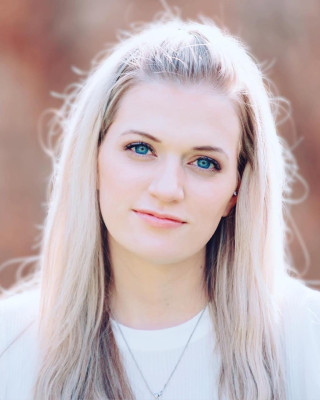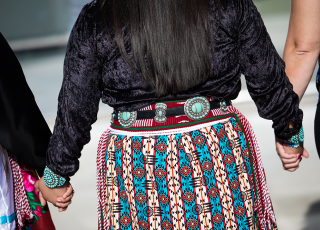Indigenous Cradles: The Powerful Invention That Changed Lives
By Olivia Barney

Throughout history, parents have been caught in a careful balancing act — working hard to provide a safe home, put food on the table, and keep up with the never-ending demands of their growing kids. Worldwide, families and diverse communities choose to divide these responsibilities differently. Still, no matter how you split up the tasks, raising a family is a lot of work.
It requires sacrifice. Sometimes they’re personal, like giving up the alone time you used to have. Sometimes they’re physical, like carrying, birthing, and feeding another human. These sacrifices have been made in every culture throughout history, so naturally, humans have produced creative solutions to make parenting easier.
Today, that might look like smart socks that measure your baby’s vital signs while sleeping, electronic swings that soothe them while you’re trying to get housework done, or a simple stroller that allows travelling with an infant to be less exhausting. But the concept of “baby gear” or “parenting technology” has been around for thousands of years — and we see evidence of it across the world.
Indigenous Women: Scientists, Teachers, and Inventors
NHMU’s Curator of Ethnography, Alexandra Greenwald, Ph.D., is focused on studying women’s roles, particularly regarding child rearing practices, foraging, preparing, and providing food for their families and communities. This is a vital role that often gets overlooked. “Everyone is so focused on men, and meat, and stone tools — because bones and stone tools preserve so well in the archaeological record,” Greenwald said. “But that doesn't mean that was the only thing that was happening. Women, and men too, in certain contexts, were figuring out and cooking plants.”
This was a crucial element of survival for a few reasons. First, there were no wilderness survival books or plant identification guides thousands of years ago. While the information on what plants were safe to eat, in what quantities, and by which method of preparation was eventually passed down as a form of ancestral knowledge, there was a time when nobody had that information. These women conducted some of the first experiments, learning by trial and error how to keep their families safe and healthy.
Humans, especially women, have been scientists and mathematicians, experimenting for time immemorial, figuring out their landscape, what is safe, what is not safe.

Second, Indigenous communities relied heavily on the resources foraged and prepared by women. Plant foods – small seeds, acorns, pine nuts, roots and tubers, and berries — were far from side dishes or unnecessary snacks. For many tribes across the western United States, women’s contributions of plant foods formed the core of the diet. But like many other times throughout history, women in these tribes were also making trade-offs between their roles as household or community breadwinners and their obligations as mothers. This constant balancing act interested Greenwald, so she began looking at how they were managing to fulfill both roles so seamlessly — and investigating the technology they’d created to make the work more manageable.
Cradle Technology Helped Communities Thrive
After a period of post-partum rest and recovery, Indigenous women needed to get back to helping provide for their families. The problem? Newborn babies slow you down. They’re fragile, hungry all the time, and need constant supervision. Which leaves these new mothers with three options: stay home and risk not having enough food, carry your baby while you work, or invent something that allows you to keep your hands free while keeping them close.
Enter the invention of the cradle.
It was perfect. It kept your baby safe and within eyesight while you worked — allowing you to safely set them down wherever you were at. If you needed to move or feed them, you could.
Greenwald was interested in studying the efficiency of these cradles from a Western science perspective informed by traditional knowledge by setting up an experiment that would measure energy expenditure vs calories collected across three test groups: one foraging without a baby, one foraging with a baby in a sling, and one foraging with a baby in a cradle. (The “baby” in these tests was a 10-pound sandbag in the rough dimensions of a 1–2-month-old infant.) Simply put, Greenwald wanted to see if the foragers were bringing in more calories than they were burning — her hypothesis was that women carrying infants in cradles would experience greater foraging efficiency (bringing in the most calories per calorie expended) than women carrying infants in a sling (because they were unencumbered by a baby while gathering).

Since this technology has endured and continues to be made and used in Native communities today, it’s clearly effective. Greenwald emphasizes that the purpose of this experiment was not to “validate” the already extensive traditional knowledge of Indigenous people, but to leverage Western science to support what communities have known for time immemorial. “Any Indigenous woman who's had their infant in a cradle could tell you exactly what I'm about to tell you, through traditional knowledge. Traditional ways of knowing and western science ways of knowing are different, but they can arrive at similar, complementary conclusions.” She continued. “I want to respectfully apply Western science to Indigenous traditional knowledge about cradles and understand from a behavioral ecological perspective the history and adoption of cradles.”
Gathering Acorns and Answers
Guided by input from knowledge keepers from tribal communities across the Western United States, Greenwald got to work. Test subjects began by fasting, had their base metabolic rates measured, and were hooked up to respirometers, heart rate monitors, accelerometers, and GPS devices. These kept track of their caloric expenditures, as well as giving Greenwald and her team data on how carefully or quickly participants moved.

Every participant was also rotated through each of the three test groups (after a rest period) to account for differences in individual foraging skill. Participants were gathering gamble oak acorns (a resource utilized by many Indigenous communities) in preselected patches to ensure a uniform distribution of acorns that would not bias foraging success.
As expected, the control group, those without a baby, gathered the most calories and burned the fewest. If we consider calories as currency, the control group was most “cost effective” and efficient. The group with the baby in the sling gathered the fewest calories and burned the fewest — which was also unsurprising. If you have a fragile infant strapped to your chest, you have to move slowly and cautiously.
But there was a bit of a surprise in the data for the cradle group. This group was extremely efficient, foraging massive amounts of acorns (second only to the group without a baby). But they also burned more calories than the sling carrying group. Once participants set their cradles down, they moved quickly and with purpose — leading to elevated heart rates and more caloric expenditure. And though this finding was surprising at first, it does make sense — any caregiver can relate to trying to get as much done as possible while the baby naps or before they need another feeding.
In the end, the cradle group was the second most efficient at bringing in calories (after the baby-less control group), and despite burning more calories than their sling carrying comparison group, their overall efficiency as foragers was higher.
An Act of Love and Legacy
Greenwald’s experiment provides data that can help explain why cradle technology spread rapidly through ancient North America, especially in communities where women’s labor was critical to the economy. Even today, urban society has praised “baby backpacks” for giving parents a bit of their independence back. But Native cradle technology also has a lot of sacred, personal meaning within Indigenous culture. It is a tradition that brings people together.

In communities where women bring in 70-80% of the family’s food, other family members take time off from foraging to make cradles — allowing the more productive foragers to continue working. It becomes a family endeavor, an act of love that carries on for generations.
“It's the whole family. It's mothers, uncles, you know, brothers, sisters,” said Lisa Bullcreek, a member of the Skull Valley Band of Goshute. “We're all contributing to make that one thing for that one baby or that one person. And that's our strength. That becomes strength, the love for a family that we're preparing and making this for. This is a tradition that has been given and passed down to us.”
You can learn more about Greenwald’s research and Indigenous perspective on cradles in our News from Our Scientists exhibit and see a variety of cradles on display in Native Voices.




